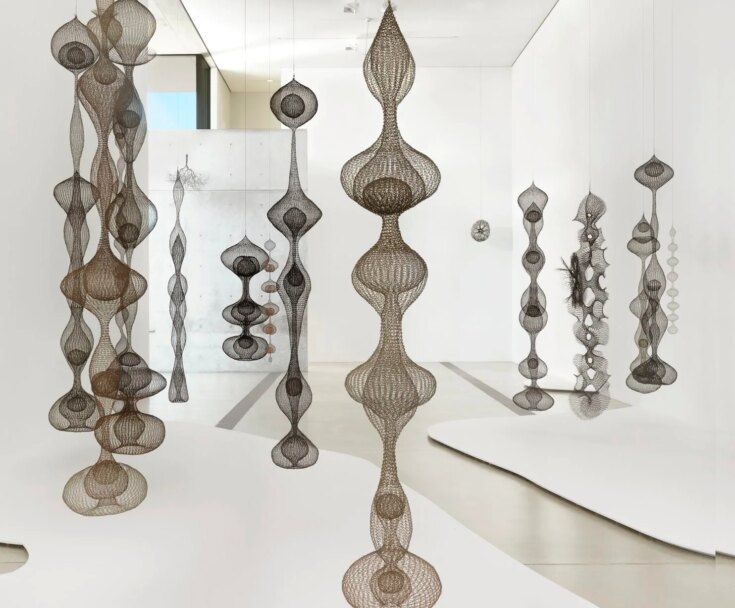Ruth Asawa is a Japanese American artist who experienced life in internment camps during her childhood. Although this is a horrible example of discrimination and abuse from fellow Americans, Ruth says that this experience shaped who she became and drastically impacted her art.
Crochet Wire Sculptor Ruth Asawa
Ruth Asawa is a San Francisco based Japanese artist who does sculpture work including many pieces that are crocheted with metal.
Along with being known for her large wire crochet sculptures, Ruth is also known for her public arts commissions; most notably, her origami-inspired fountain sculptures.
Ruth learned to crochet in the 1940s during a trip to Mexico and she took the basket-making techniques she learned and applied them to making larger sculptural pieces.
Asawa was not only an artist but also an activist who pushed for equitable arts programs within San Francisco's public schools.
Ruth began exhibiting her work in 1953. Exhibitions continue to this day. Her work has been shown in San Francisco, Los Angeles, New York, Boston and around the world.
She began doing public commission work in the 1960s. She also worked as an art teacher and served in many art advocacy roles. For example, in the 1970s she part of President Carter's Commission on Mental Health on “The Role of the Arts”.
In 1982 it was officially declared that February 12 would be Ruth Asawa Day in San Francisco. In 1985 she was diagnosed with lupus and had to scale back a bit on her work. Despite this, she continued to receive awards and honors.
In 1995 she received the honorable Asian American Art Foundations Golden Ring Lifetime Achievement Award. She had gone to Black Mountain College to study art when she was young but decided to go back to school and got a BFA in 1998.
Ruth Asawa's work, from the crochet sculptures to her paintings to her activism work, is not only incredibly impressive, but has had a lasting impression within the art world. Her work continues to be shown and seen aroundthe world, and rightfully so. She is truly a master of her craft. If you ever get a chance to see her exhibits, we highly suggest you go.
As well as being known for her large wire crochet sculptures, Ruth is also celebrated for her public art commissions; most notably, her origami-inspired fountain sculptures.
Ruth learned to crochet in the 1940s during a trip to Mexico, and she took the basket-making techniques she learned and applied them to making larger sculptural pieces.
Asawa was not only an artist but also an activist who pushed for equitable arts programs within San Francisco’s public schools.
Ruth began exhibiting her work in 1953, and her exhibitions continue to this day. Her work has been shown in San Francisco, Los Angeles, New York, Boston, and around the world.
She began doing public commission work in the 1960s. She also worked as an art teacher and served in many art advocacy roles. For example, in the 1970s, she was part of President Carter’s Commission on Mental Health on “The Role of the Arts”.
In 1982, it was officially declared that February 12 would be Ruth Asawa Day in San Francisco. In 1985 she was diagnosed with lupus and had to scale back a bit on her work. Despite this, she continued to receive awards and honors.
In 1995, she received the honorable Asian American Art Foundations Golden Ring Lifetime Achievement Award. She had gone to Black Mountain College to study art when she was young but decided to go back to school and got a BFA in 1998.









